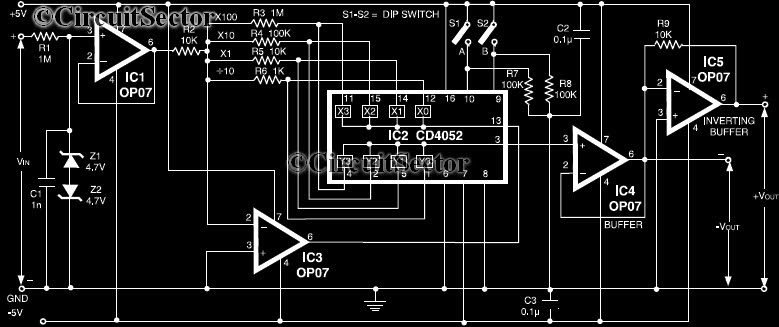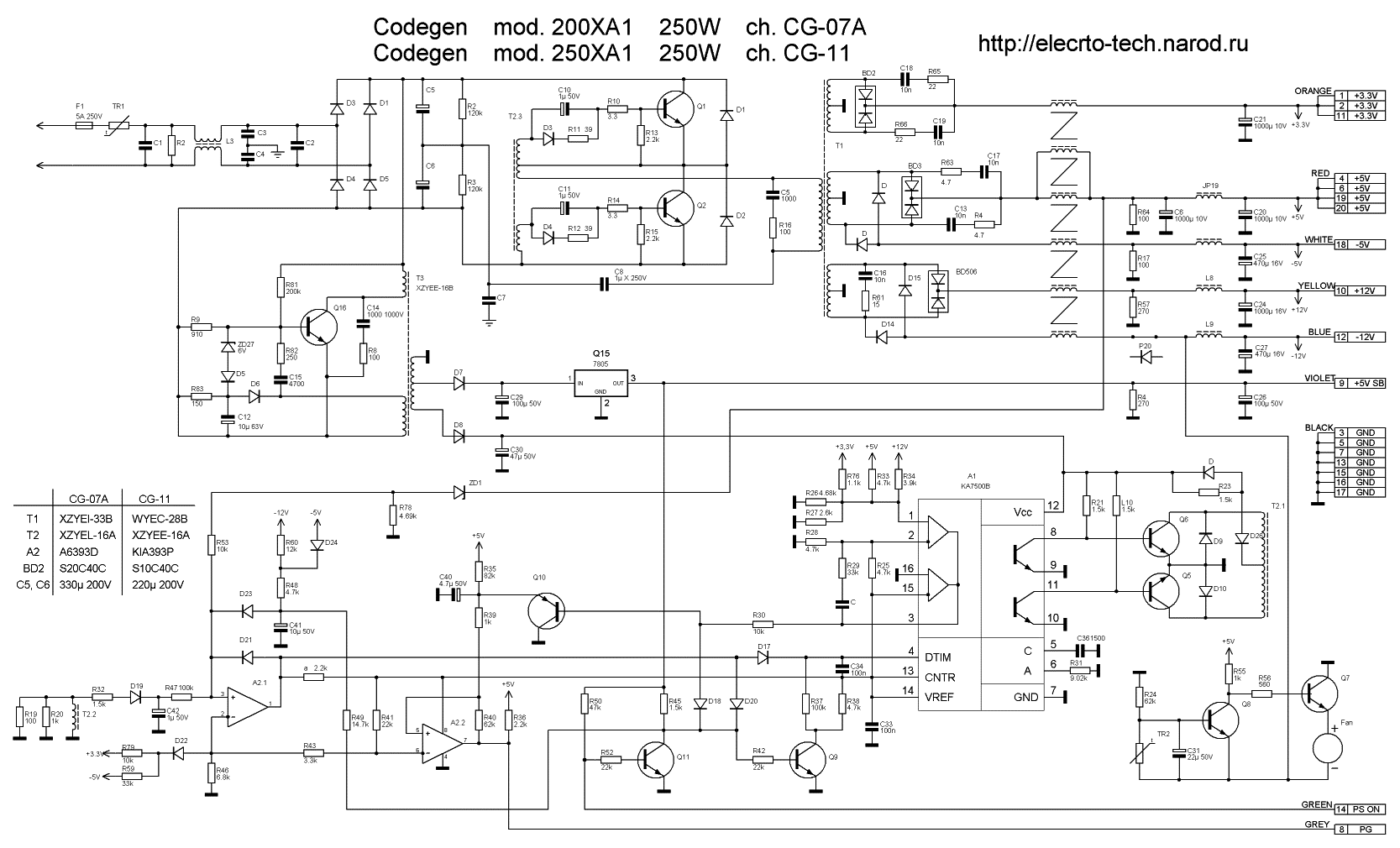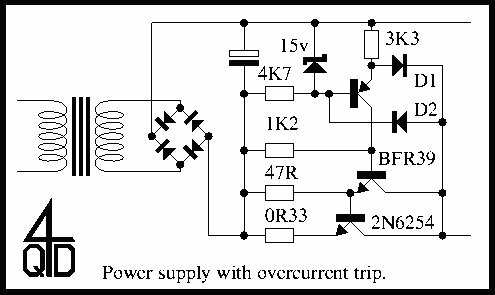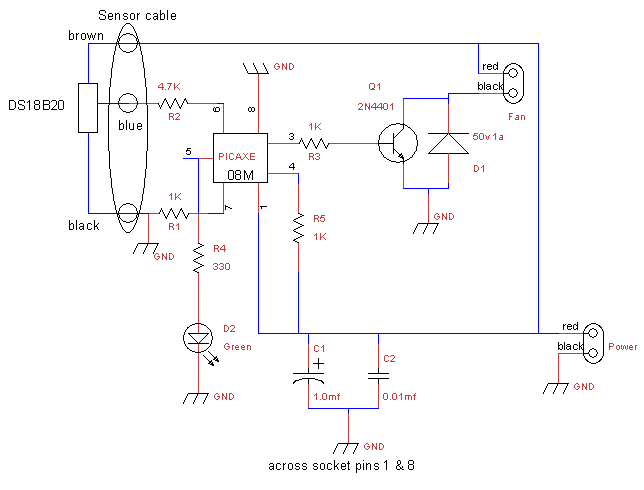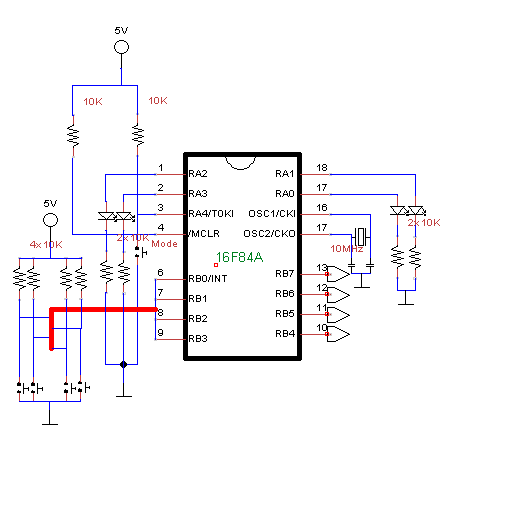
ac power control with thyristor
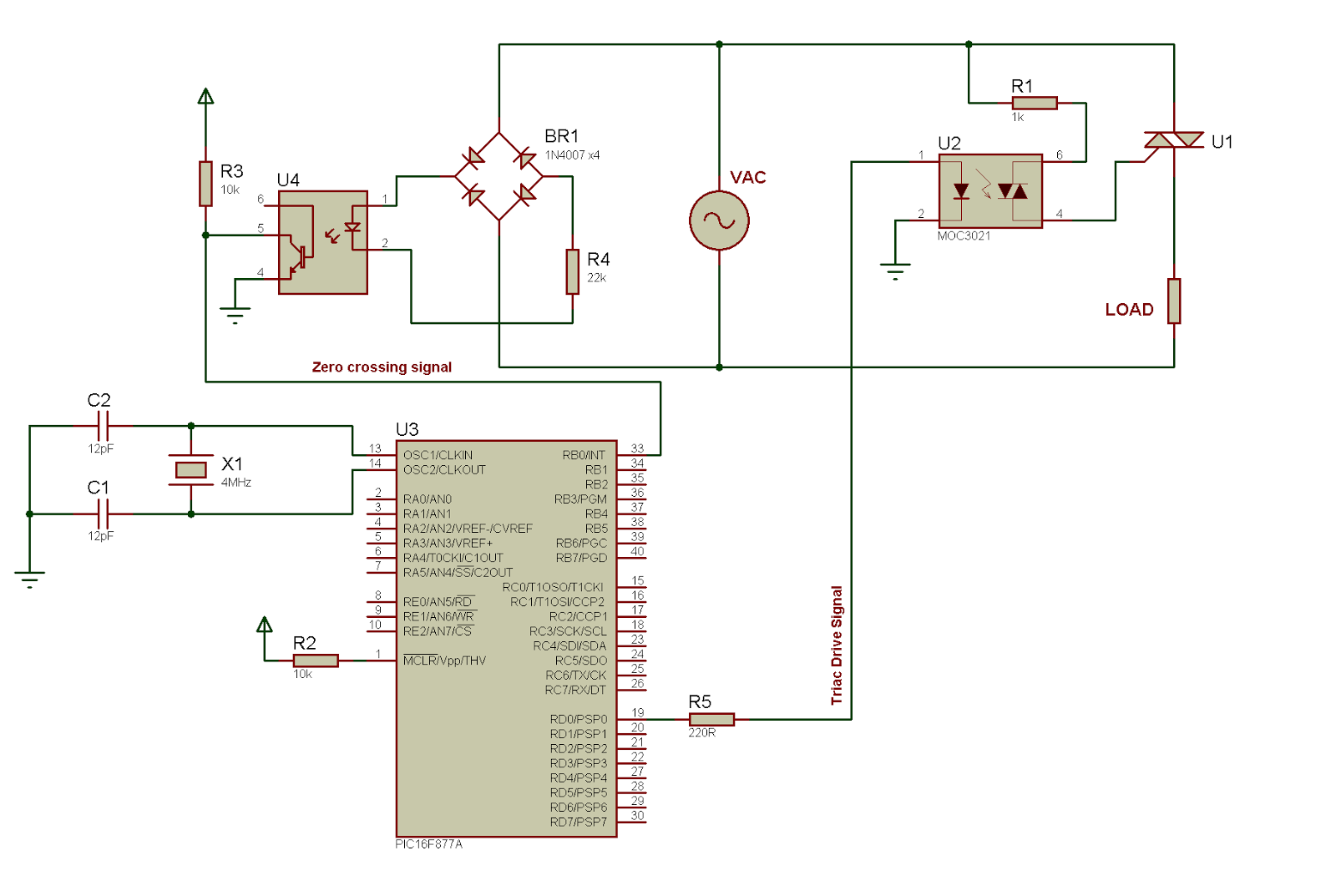
The image above clearly demonstrates phase angle control, where the output voltage is regulated by the gate drive signal applied to a thyristor. Phase angle control is a technique of pulse width modulation (PWM) used with alternating current (AC) input voltages, typically from the mains supply. While AC can originate from various sources, the mains supply is the most prevalent, enhancing the utility of the phase angle control method. The primary objective of phase angle control is to manage or limit the power delivered to the load. Thyristors, mainly triacs or silicon-controlled rectifiers (SCRs), are the power devices employed in phase angle controllers. Although high-frequency switching methods using MOSFETs or IGBTs exist, this discussion focuses solely on phase angle control utilizing thyristors. Power flow to the load is regulated by delaying the firing angle, which is the timing of the gate signal applied to the power device during each half-cycle. Thyristors are latching devices; once a gating signal turns them on, they remain active as long as the current exceeds the holding and latching currents. They turn off naturally when the current approaches zero, coinciding with the AC mains zero crossing. This process is known as natural line commutation. It is assumed that the load is resistive with minimal inductance, although inductive loads are common in practice. In the provided example circuit, a triac serves as the power device. A gate pulse is sent to the triac at a specific time between two zero crossings. If the gate pulse is not applied immediately after zero crossing, the triac remains off, preventing current flow. Once the gating signal is applied, the triac activates and remains on until the next zero crossing, when the current drops to zero. For clarity, it is assumed that the current through the triac exceeds both the latching and holding currents, ensuring it remains on post-activation. The duration for which the triac remains on is dictated by the delay between the zero crossing and the application of the gating signal. Thus, the voltage or power supplied to the load is adjusted by modifying the timing of the trigger signal to the triac. It is important to note that the relationship between the delivered voltage, power, and firing phase angle is not linear. The relevant voltages in this context are the RMS voltage, which influences power output to resistive loads, and the average voltage, which pertains to devices that operate based on average voltage levels.
Phase angle control is a sophisticated method of managing AC power delivery. In practical applications, the circuit typically consists of a triac connected in series with the load, and a control circuit that generates the gating signal based on the desired phase angle. The control circuit often includes a zero-crossing detector, which identifies when the AC voltage waveform crosses zero volts. This detector is crucial as it provides a reference point for timing the gating signal.
The timing of the gating pulse is critical; it determines the phase angle at which the triac is triggered. By adjusting this timing, the average power delivered to the load can be finely controlled. The relationship between the phase angle and the RMS voltage can be complex, particularly in non-linear loads, and requires careful consideration in design.
In addition to resistive loads like incandescent bulbs, phase angle control can also be applied to inductive loads, though this introduces additional complexities such as phase shift and back EMF effects. For inductive loads, the effective power delivered may differ from the calculated power due to these factors, necessitating more sophisticated control strategies.
Simulation tools can be employed to model the behavior of phase angle control circuits, allowing engineers to visualize the effects of different firing angles on the output voltage and current waveforms. This modeling is invaluable for optimizing circuit performance before physical implementation.
In conclusion, phase angle control is an essential technique in power electronics, enabling efficient management of AC power to various types of loads. Its implementation requires a thorough understanding of thyristor operation, load characteristics, and the dynamics of AC waveforms.The photo above clearly illustrates phase angle control: output voltage controlled by the gate drive signal applied to a thyristor. What is phase angle control That is what I`m going to talk about in this article. Phase angle control is a method of PWM applied to AC input voltages, usually the mains supply. Of course, the AC supply could be from a transformer or any other AC source, but the mains supply is the most common input this gives the phase angle control method its greatest usefulness. It has of course become quite obvious from the title (and I`m sure most of you reading will already know this) that the purpose of phase angle control is to control or limit power to the load.
The power device used in phase angle controllers is a thyristor mostly triacs or SCRs. (There are methods of phase controlling employing high frequency switching using a MOSFET or IGBT, but here I`ll talk about phase angle control with thyristors only). The power flow to the load is controlled by delaying the firing angle (firing time each half-cycle) to the power device.
We know that the thyristor is a latching device when the thyristor is turned on by a gating signal and the current is higher than the holding current and the latching current, the thyristor stays on, until the current through it becomes sufficiently low (very close to zero). The thyristor turns off when current through it becomes zero, as happens at the AC mains zero crossing.
This is the natural line commutation. (Another method of turning the thyristor off is by forced commutation. I won`t go into that now. ) The assumption here is that the load is resistive and has little to no inductance. Of course, this is not always the case, as inductive loads are often used. However, I`ll work with this assumption for now. I`ve added the circuit, code and simulation of an example later in this article. And that uses a triac as the power device. So, from now on, I`ll just refer to the triac instead of talking about a thyristor in general. So, in phase angle control, a gate pulse is sent to the triac. This is sent at a time between one zero crossing and the next. Without the gate pulse sent to the triac, right after zero-crossing, the triac is off and no current flows through it. After a certain time, the gating signal is given to the triac and it turns on. The triac then stays on until the current through it becomes zero (natural line commutation). This is at the next zero crossing. For simplicity`s sake and as usually should be, assume that the current through the triac (when on) is larger than the latching current and the holding current.
If you didn`t already know this, the latching current is the current that must pass through the triac right after it is turned on to ensure that it latches. The holding current is the current level through the triac below which the triac will turn off. So, the assumption that current through the triac is higher than the latching current and the holding current means that the triac stays on once it is fired on.
It stays on until the current through it is zero. This means that the voltage is supplied to the load for a fraction of the cycle, determined by how long the triac is on. How long the triac is on, is, in turn, determined by the delay time between the zero-crossing and the applying of the triac gating signal.
So, to sum it up, we adjust the voltage or power delivered to the load by delaying the trigger signal to the triac. One thing to remember is that, the delivered voltage and power are not linearly related to the firing phase angle.
There are two voltages here that we are concerned with the RMS voltage and the average voltage. The RMS voltage governs the power output to resistive loads such as incandescent bulbs and resistive heaters. The average value relates to devices that function on the average voltage level. This is important because, when testing, your voltmeter will register 🔗 External reference
Phase angle control is a sophisticated method of managing AC power delivery. In practical applications, the circuit typically consists of a triac connected in series with the load, and a control circuit that generates the gating signal based on the desired phase angle. The control circuit often includes a zero-crossing detector, which identifies when the AC voltage waveform crosses zero volts. This detector is crucial as it provides a reference point for timing the gating signal.
The timing of the gating pulse is critical; it determines the phase angle at which the triac is triggered. By adjusting this timing, the average power delivered to the load can be finely controlled. The relationship between the phase angle and the RMS voltage can be complex, particularly in non-linear loads, and requires careful consideration in design.
In addition to resistive loads like incandescent bulbs, phase angle control can also be applied to inductive loads, though this introduces additional complexities such as phase shift and back EMF effects. For inductive loads, the effective power delivered may differ from the calculated power due to these factors, necessitating more sophisticated control strategies.
Simulation tools can be employed to model the behavior of phase angle control circuits, allowing engineers to visualize the effects of different firing angles on the output voltage and current waveforms. This modeling is invaluable for optimizing circuit performance before physical implementation.
In conclusion, phase angle control is an essential technique in power electronics, enabling efficient management of AC power to various types of loads. Its implementation requires a thorough understanding of thyristor operation, load characteristics, and the dynamics of AC waveforms.The photo above clearly illustrates phase angle control: output voltage controlled by the gate drive signal applied to a thyristor. What is phase angle control That is what I`m going to talk about in this article. Phase angle control is a method of PWM applied to AC input voltages, usually the mains supply. Of course, the AC supply could be from a transformer or any other AC source, but the mains supply is the most common input this gives the phase angle control method its greatest usefulness. It has of course become quite obvious from the title (and I`m sure most of you reading will already know this) that the purpose of phase angle control is to control or limit power to the load.
The power device used in phase angle controllers is a thyristor mostly triacs or SCRs. (There are methods of phase controlling employing high frequency switching using a MOSFET or IGBT, but here I`ll talk about phase angle control with thyristors only). The power flow to the load is controlled by delaying the firing angle (firing time each half-cycle) to the power device.
We know that the thyristor is a latching device when the thyristor is turned on by a gating signal and the current is higher than the holding current and the latching current, the thyristor stays on, until the current through it becomes sufficiently low (very close to zero). The thyristor turns off when current through it becomes zero, as happens at the AC mains zero crossing.
This is the natural line commutation. (Another method of turning the thyristor off is by forced commutation. I won`t go into that now. ) The assumption here is that the load is resistive and has little to no inductance. Of course, this is not always the case, as inductive loads are often used. However, I`ll work with this assumption for now. I`ve added the circuit, code and simulation of an example later in this article. And that uses a triac as the power device. So, from now on, I`ll just refer to the triac instead of talking about a thyristor in general. So, in phase angle control, a gate pulse is sent to the triac. This is sent at a time between one zero crossing and the next. Without the gate pulse sent to the triac, right after zero-crossing, the triac is off and no current flows through it. After a certain time, the gating signal is given to the triac and it turns on. The triac then stays on until the current through it becomes zero (natural line commutation). This is at the next zero crossing. For simplicity`s sake and as usually should be, assume that the current through the triac (when on) is larger than the latching current and the holding current.
If you didn`t already know this, the latching current is the current that must pass through the triac right after it is turned on to ensure that it latches. The holding current is the current level through the triac below which the triac will turn off. So, the assumption that current through the triac is higher than the latching current and the holding current means that the triac stays on once it is fired on.
It stays on until the current through it is zero. This means that the voltage is supplied to the load for a fraction of the cycle, determined by how long the triac is on. How long the triac is on, is, in turn, determined by the delay time between the zero-crossing and the applying of the triac gating signal.
So, to sum it up, we adjust the voltage or power delivered to the load by delaying the trigger signal to the triac. One thing to remember is that, the delivered voltage and power are not linearly related to the firing phase angle.
There are two voltages here that we are concerned with the RMS voltage and the average voltage. The RMS voltage governs the power output to resistive loads such as incandescent bulbs and resistive heaters. The average value relates to devices that function on the average voltage level. This is important because, when testing, your voltmeter will register 🔗 External reference
